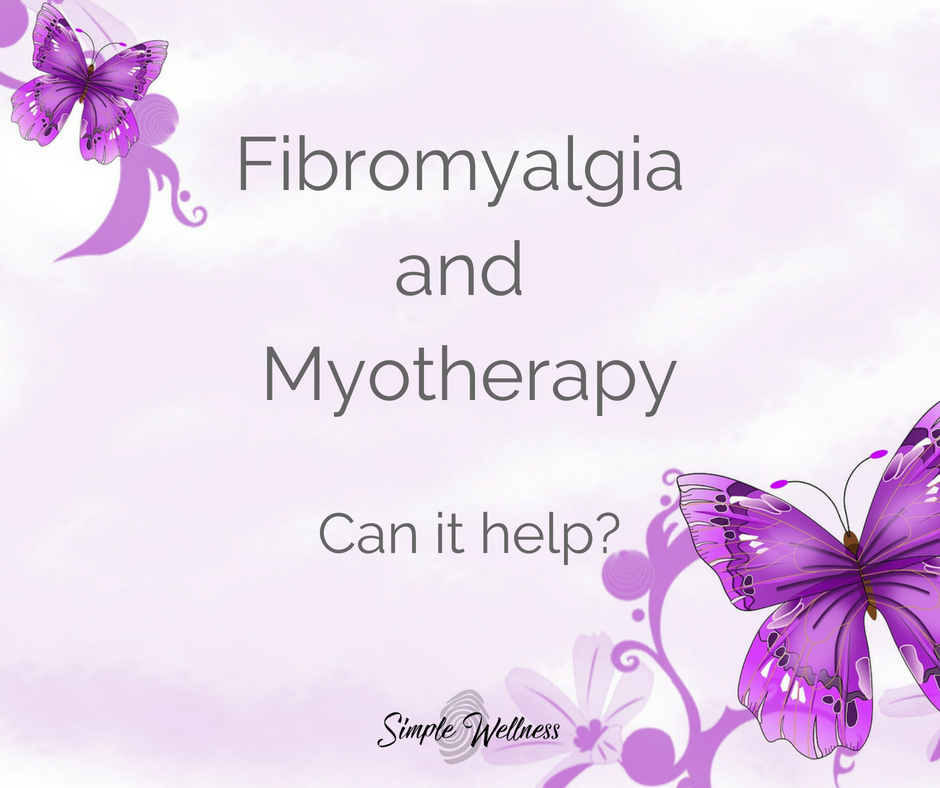|
One condition that I see a lot in my clinic is fibromyalgia. People of all ages and all walks of life can have fibromyalgia, and it is still a misunderstood condition. So today, I want to share a myotherapist’s perspective of fibromyalgia. What is Fibromyalgia?
This diagnosis is a condition that can affect multiple systems of the body. Symptoms can include widespread muscle and joint pain, fatigue, digestive issues, brain fog and weakness, among many, many other associated symptoms. People with fibromyalgia may have other health concerns, including musculoskeletal issues. In my experience, fibromyalgia can come hand in hand with conditions like bursitis, disc injuries, osteoarthritis, rheumatoid arthritis, and plantar fasciitis, and many more. Pain is a major symptom of fibromyalgia, but it can vary from person to person and day to day. Typical fibromyalgia pains can include both muscle aches and nerve pain – it can feel like a deep ache or sharp, shooting, burning, throbbing or like pins and needles. Some days the pain can cover the whole body, others it may be one area. Today it may be back pain, tomorrow it’s hands and feet. Fibromyalgia can be unpredictable at the best of times! Fibromyalgia, Pain Threshold & Pain Tolerance One thing that fibromyalgia clients should keep in mind is the difference between pain threshold and pain tolerance. Pain threshold is the amount of stimulus needed before the pain signal begins. Someone with fibromyalgia will usually have a low pain threshold - that means they feel pain often with very little "cause". They may wake up with aching, tight muscles without having over used those areas or done anything out of their ordinary routine to aggravate the area. People who experience allodynia can experience pain from normally non-painful things like the sensation of clothing on skin or the pressure of sitting in a chair. On the other hand, pain tolerance is how much pain a person will withstand before seeking help. Many fibromyalgia clients build up a high pain tolerance, putting up with pain levels that would send the average person to the emergency room! So if a practitioner mentions you have a low pain threshold, it simply means your nervous system is on high alert. It responds quickly to incoming messages about potential danger - even if rationally you know there is little or no actual danger. Its a neurological response, not a psychological response. For more about pain responses and the role of the overactive nervous system, see my previous article. How can myotherapy help with fibromyalgia? Many people with fibromyalgia are terrified of getting physical treatments, as they’ve often had painful massages and treatments in the past. Unfortunately many of my fibromyalgia clients have been told by previous therapists that "it needs to hurt to be effective" which I don't believe in one little bit. A gentle myotherapy session can be incredibly beneficial! I like to be upfront with my treatment approaches, so I want to make it clear - I don't claim to be able to cure fibromyalgia using myotherapy treatments. There is no known cure. But what I have found time and time again is that regular myotherapy treatment is excellent for keeping flares at bay and managing muscle and joint pain to make day to day activities easier and more enjoyable. A few ways I use myotherapy to relieve fibromyalgia symptoms includes:
Although these are some treatments I use, every client is different. The whole process is in your hands – if something hurts too much, we will find an alternative that doesn’t hurt. After all, I am the ultimate ‘no pain, all gain’ myotherapist! A typical treatment plan for fibromyalgia includes a few treatments fairly close together to begin with - ideally weekly or fortnightly. As the treatments begin to hold longer and longer, the time between treatments becomes longer. Most of my fibro clients find their "sweet spot" for ongoing maintenance treatments to be anywhere between a fortnightly treatment to once every 6-8 weeks. Is it always ‘fibro pain’? One thing that I often see is clients and doctors putting new pains or symptoms down to being fibromyalgia-related. Although this might be true, there’s also a chance that it’s not. That’s why I always encourage clients with any chronic pain condition to get new symptoms checked out by a musculoskeletal practitioner. For example, one of my fibro clients recently was diagnosed with lumbar stenosis - a narrowing of the canal where the spinal cord runs. His leg symptoms had been put down to being fibro-related for years, but I wasn't convinced and asked him to get a second opinion from a chiropractor who could send him to have some scans to investigate. After getting an MRI, it was determined that in addition to fibromyalgia, there was actually a structural cause for his deep leg pains. Fibromyalgia might be hard to manage, but co-existing issues don’t have to be. By identifying any other conditions and managing them from the start, you can see big improvements in your pain levels and a reduction in flares. Are you ready to support your fibromyalgia pain in a holistic, effective way? Don’t hesitate – book yourself in for a session today. Comments are closed.
|
Meet Our Team
We have a team of great practitioners available 7 days a week at our Rowville clinic. Archives
July 2024
Categories
All
|
Got a question about Myotherapy?
Contact Mel by phone, email or Facebook
|
Simple Wellness Myotherapy & Remedial Massage Clinic
Shop 12B 150 Kelletts Rd Rowville VIC 3178 |
Phone us on
03 8204 0970 |


 RSS Feed
RSS Feed